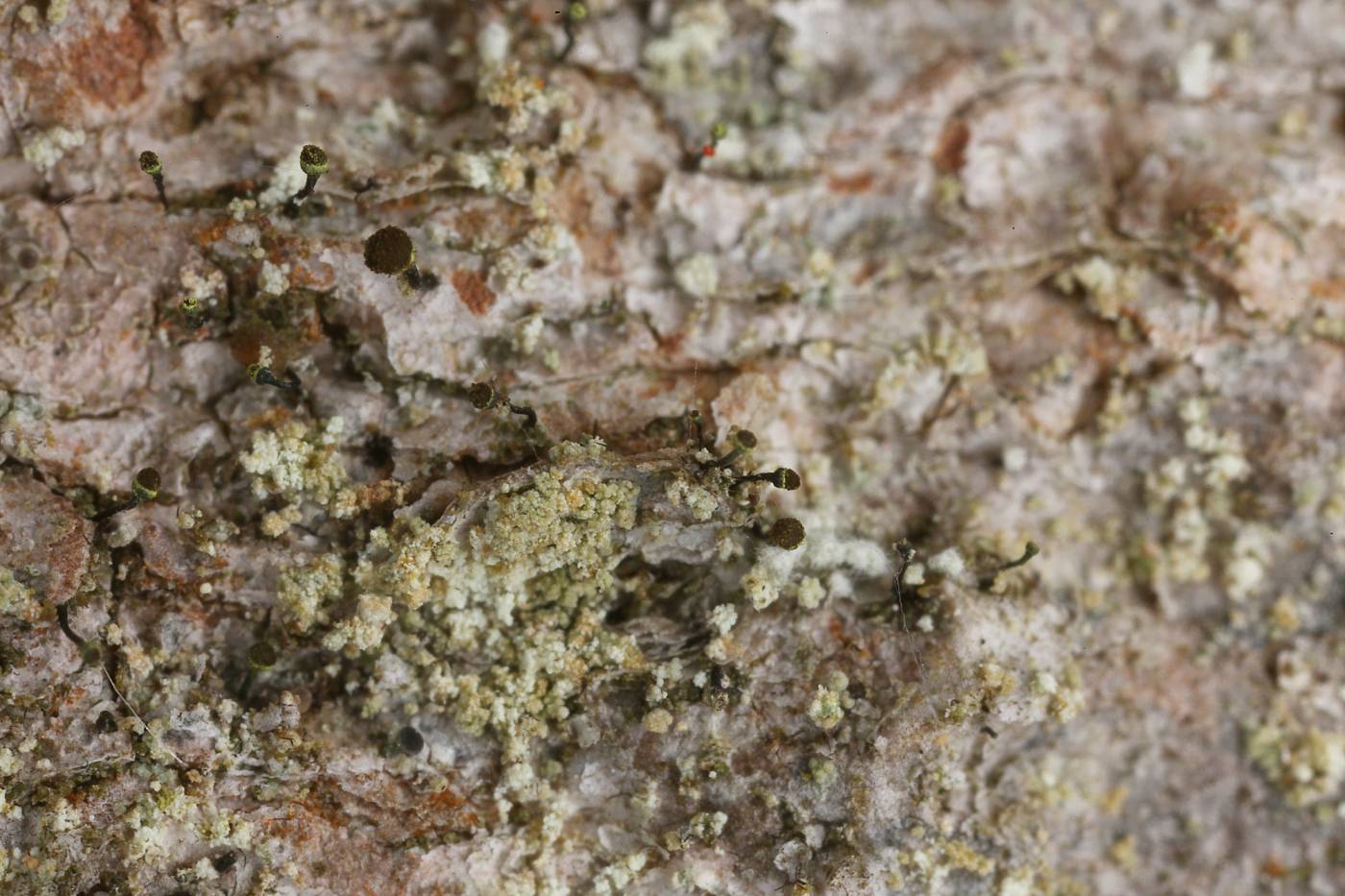Chaenotheca laevigata is characterised by the immersed thallus containing trebouxioid algae, by the relatively tall fruiting bodies covered with yellow pruina, and by the ellipsoid ascospores. It grows on acidic tree bark and on wood of snags and stumps. It is a predominantly boreal-montane lichen and therefore shows the preferences for coniferous to mixed forests. It is a rare lichen in central Europe, possibly because it is a species of late succession stages (Selva 2003). From the Czech Republic, several recent records are available from the Šumava Mountains, as well as findings from the Jihlavka Valley near Hartvíkovice (Nádvorník 1938, Suza 1944) and from the Praděd National Nature Reserve in the Hrubý Jeseník Mountains.
Literature: Nádvorník J. (1938): Nouveaux et intéressants lichens de Tchécoslovaquie. – Věstník Královské české společnosti nauk 1937/20: 1–3. Suza J. (1944): Sedmý příspěvek k lichenologii Moravy. – Sborník Klubu Přírodovědeckého v Brně 25: 78–89. Selva S.B. (2003): Using calicioid lichens and fungi to assess ecological continuity in the Acadian Forest Ecoregion of the Canadian Maritimes. – Forestry Chronicle 79: 550–558.
taxonomic classification:Ascomycota → Lichinomycetes → Coniocybales → Coniocybaceae → Chaenotheca
Red List (Liška & Palice 2010):CR – critically endangered
Red List (Malíček 2023):C1 – critically endangered
Occurrence in the Czech Republic
All records: 5, confirmed 5. One click on a selected square displays particular record(s), including their source(s).
